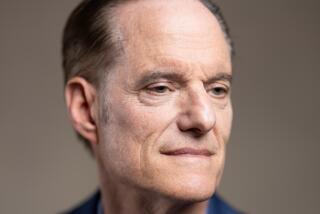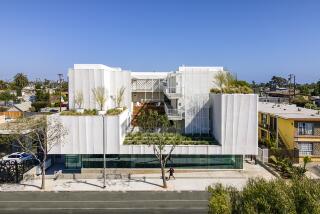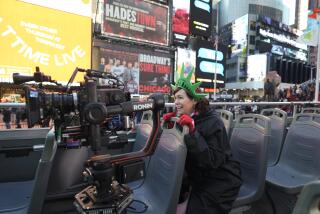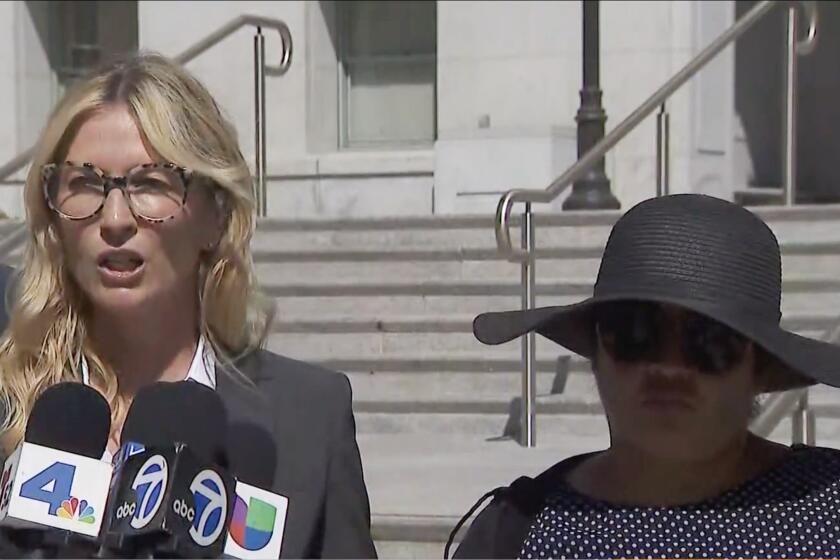First & Spring: Hollywood debate is trial run for city growth fight
The Palladium project is, in many ways, just what elected leaders at Los Angeles City Hall say they want.
Under the proposal, two 30-story residential towers would go up a block from a Hollywood Boulevard subway station. It would add 731 homes in the middle of a housing crunch. And the project would be constructed entirely on parking lots, ensuring that the developer won’t need to demolish a single rent-controlled apartment.
Nevertheless, the push to approve the Palladium Residences has found a powerful foe in the project’s next-door neighbor, the AIDS Healthcare Foundation, which says the development is too big for its surroundings.
Now, the foundation’s bid to torpedo the project is becoming Round 1 in what’s expected to be a bruising citywide debate over growth, development and the city’s willingness to stick with the zoning that’s on its books.
AIDS Healthcare Foundation, working with a collection of activists known as the Coalition to Preserve L.A., delivered a jolt to the city’s business community last week, announcing that it has a proposed ballot measure to put new restrictions on “mega projects” — the kind that typically need changes to planning and zoning rules. The nonprofit group’s top executive said the City Council too frequently rewrites those laws on a project-by-project basis at the request of favored developers.
In its Palladium fight, the group has retained the law firm of Robert P. Silverstein, who succeeded in overturning the city’s approval of a Target shopping center, the 22-story Sunset and Gordon apartment tower and other developments in Hollywood. The nonprofit also brought roughly three dozen supporters to last week’s Planning Commission hearing on the Palladium project.
Jack Humphreville, a member of the newly formed ballot coalition, described the Palladium as an “out-of-context luxury development” that will generate huge traffic congestion. If the project is approved, “it’s going to be the poster child for the ballot initiative,” he said.
NEWSLETTER: Get the day’s top headlines from Times Editor Davan Maharaj >>
The nine-member commission, made up of appointees of Mayor Eric Garcetti, is set to vote on the project next month. But a majority of its members have already begun signaling support for the development, saying the Palladium site is exactly where high-density residential projects should be allowed.
“We want to preserve our neighborhoods, but we have to figure out where we’re going to put that density. And … in this particular location, it’s wholly appropriate,” Commissioner Robert Ahn said.
Commission President David Ambroz went further during last week’s hearing, warning that development foes could bring L.A.’s “economic progress” to a halt.
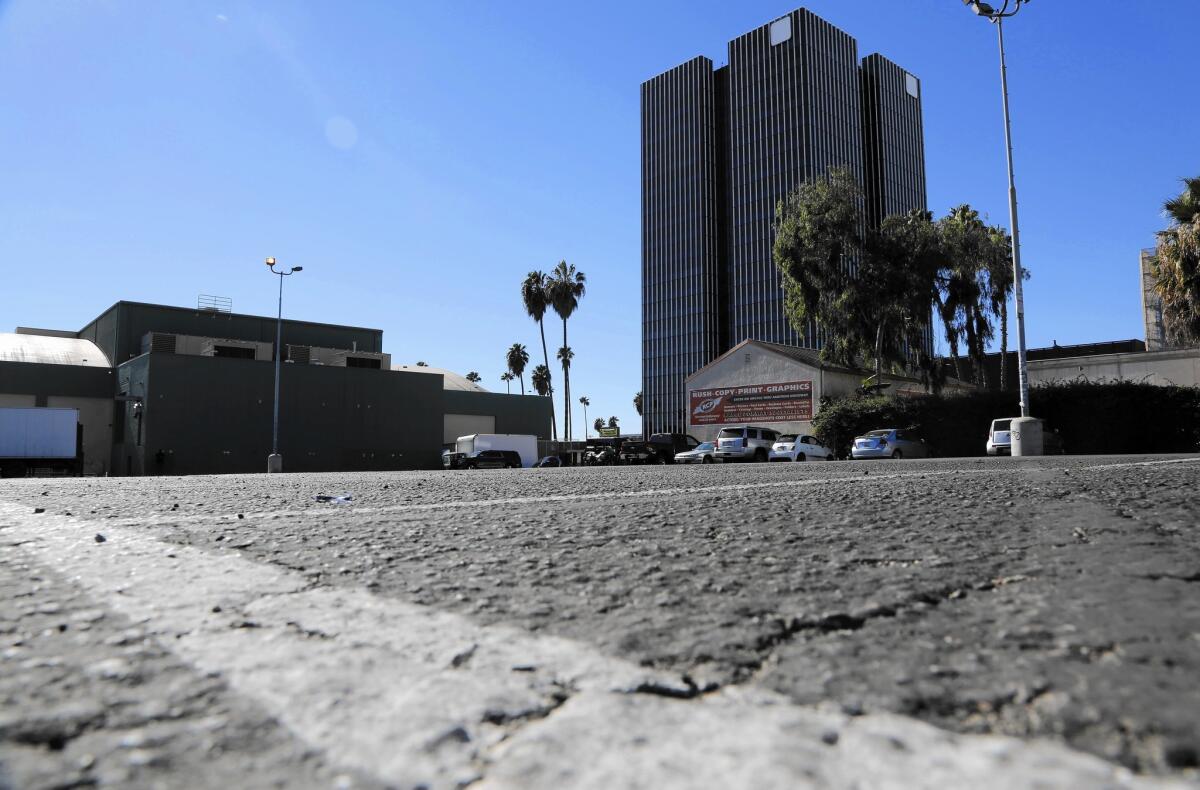
“Some of the people’s vision for Los Angeles and development frightens me,” said Ambroz, who lives in Hollywood.
Critics say the city is rewriting its planning rules for the Palladium’s developer, giving it lucrative increases in height and density. Foes also contend the apartment project —planned next to the Hollywood Palladium — will largely cater to Angelenos with six-figure incomes, doing little to address the city’s housing needs.
Supporters of the Palladium describe the city’s approval process as being entirely legal. They also say 5% of the project’s housing units will have below-market rents.
The Palladium project has been caught up in the development battles that have roiled Hollywood for years. In 2012, the council approved a sweeping update of the Hollywood Community Plan, the rule book for new construction in that neighborhood, allowing taller and denser buildings near public transit stops.
The council’s vote changed the zoning and land-use designations for part of the Palladium site, making it possible for higher-density residential buildings to be not just on the front of the property, near Sunset Boulevard, but also in the back.
Relying on those new rules, developer Crescent Heights began the lengthy process of obtaining approval for two towers on the site, company spokeswoman Jamarah Harris said.
Neighborhood groups sued over the Hollywood plan, persuading a judge to strike down the measure. That caused the land-use designations for the Palladium property to revert back to the more restrictive rules established in 1988.
As a result, Crescent Heights was forced to seek a zoning change and other special approvals for its residential towers. Those are exactly the types of rule changes now being criticized by the Coalition to Preserve L.A.
If the city rejects the developer’s requests, Crescent Heights would be allowed to build only 670 units on the site, said Lucralia Ibarra, the city planner who reviewed the Palladium project. Furthermore, the vast majority of those units would need to be built at the front of the property on Sunset Boulevard, where there is no height limit, she said.
Under the current rules, buildings in the back of the Palladium site cannot be taller than 45 feet, Ibarra said.
Lawyers for AIDS Healthcare Foundation dispute the city’s numbers, saying planning officials are letting the developer more than double the number of housing units allowed on the site.
Despite those assertions, the Palladium project has picked up support from Councilman Mitch O’Farrell, construction trade unions and business leaders. Leron Gubler, president and chief executive of the Hollywood Chamber of Commerce, said he is baffled by complaints about the project’s height.
A 20-story residential tower already exists at Sunset and Vine. The Columbia Square project, currently under construction next door, will also reach 20 stories. And the building that houses AIDS Healthcare Foundation is 22 stories, Gubler said.
“You’ve got tall buildings in the area already,” he said.
Palladium foes say Hollywood is suffering from the cumulative effects of having so many high-density projects go up in the neighborhood. Parking has become scarce, they argue, and travel by car for even short distances can be interminable.
“My two-mile drive sometimes takes 25 minutes because of all the construction that’s going up around Vine and Sunset,” Hollywood resident Liza Brereton, a staff attorney for the AIDS Healthcare Foundation, said during last week’s hearing.
Brereton said she frequently carries a laptop or large amounts of documents during her commute — making a car essential. Supporters of the Palladium, on the other hand, say local residents will need to get used to other forms of travel.
Brian White, who also lives in Hollywood, praised Crescent Heights for promising to put hundreds of bike stalls in its Palladium project. He said he relies on bicycles and public transit to get around.
“I keep hearing that it takes people 20 minutes to go a mile in Hollywood,” he told the commission. “And I just think, ‘Take a bike. Walk.’”
ALSO
10 people overdose on the synthetic drug Spice in downtown San Diego
UCI vows better environment for African Americans after complaints
Red panda found safe after escape from California zoo
More to Read
Sign up for Essential California
The most important California stories and recommendations in your inbox every morning.
You may occasionally receive promotional content from the Los Angeles Times.
